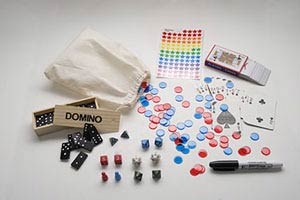First Grade Math Skills and Concepts
While every state and school district differs slightly, below you will find many of the Math concepts children will likely be covering in 1st Grade Math such as Skip Counting and Using a Hundreds Board, Math Facts, Money, Place Value, Telling Time, Measurement, Shapes and Solids, Symmetry, Fractions, Patterns, and Graphs. The Giggle Facts Math Program will not only help students master their Addition and Subtraction Facts, but will also help kids with many other math concepts they will encounter in First Grade.
You may notice that many concepts and skills repeat over these four grade levels. This is due to the fact that math concepts build on each other grade by grade. Giggle Facts is designed for kids aged 4 to 8 and supports math learning, skills and concepts in Kindergarten, First Grade, 2nd Grade and 3rd Grade. It is a complete math program and is great for First Grade Math Games.
Skip Counting & Using a Hundreds Board
Students in First Grade will learn to count by 1s, and skip count by numbers like 2s, 5s, and 10s (ex: 2,4, 6, 8, or 5, 10, 15, 20). Frequently, a Hundreds Board is used to visually represent these concepts, and to assist students in learning them.
Giggle Facts teaches children the relationship between numbers (Number Sense), which in turn helps with concepts such as skip counting, greater than / less than, before / after, odd and even numbers, etc.

Math Facts – Addition and Subtraction
Addition and Subtraction Math Facts will be introduced in First Grade (if they weren’t already introduced in Kindergarten). Students will learn Math Fact Addition strategies such as “Doubles” (6+6 or 4+4), “Turnarounds” (2+7 = 7+2), “Near Doubles”, “Almost Doubles” or “Doubles Plus 1” (6+6+12, so 6+7= one more, or 13). They will also be introduced to the concept of Subtraction, and will learn the “easier” Subtraction Facts.
Students will likely have opportunities to practice Math Facts in the classroom, however, most children need to spend more time at home practicing them. Giggle Facts (see Giggle Facts Homepage) reinforces the strategies above, and incorporates many others as well. Since instant recall of Math Facts is imperative to learning higher-level math concepts (see Research), it is very important to practice Math Facts often. Giggle Facts (see Sample Games) is a perfect way to play while learning Addition and Subtraction Facts, without relying solely on tedious flashcards. The Math program includes the frequent use of playing cards, dominoes, and multi-sided dice (see Program Components) to make learning fun and to make the math games engaging for children.
Money
First Graders will count / add pennies, nickels, dimes, quarters, and perhaps dollar bills. The concept of making change will be introduced. Children who know their Addition and Subtraction Facts will, overall, have an easier time adding / counting money. Students who have an understanding of Subtraction will have an easier time with making change. Giggle Facts allows children to develop their number sense that will help them make connections between Math Facts and skip counting with money.
Place Value
Each digit in larger numbers has a value, depending on its position in the number. For example, in the number 478, the 4 is worth 4 “hundreds” (or 400), the 7 is worth 7 “tens” (or 70), and the 8 is worth 8 “ones”, or simply 8.
Giggle Facts teaches students to break down larger numbers into their smaller components (tens and ones) through 2 different strategies. There is an Addition strategy named “Teens”, and a Subtraction strategy named “More Teens” in the Giggle Facts program that supports the concept of Place Value.
Telling Time
Learning to tell time is an important skill that students work on in First Grade. They will likely tell time to the hour, half-hour, quarter-hour, and perhaps even to 5 minutes using both digital and analog clocks.
The concept of elapsed time may also be introduced, and once again, the keen number sense that students will develop through the Giggle Facts program will aid them in understanding this tricky concept.
Measurement
First Graders will have many opportunities to measure in a variety of ways. Grade One students will learn linear measurement with non-standard units (ex: hand spans) and standard units (ex: inches or centimeters), as well as temperature using a thermometer, time using calendars, etc.
Shapes and Solids
Students will learn to classify 2-dimensional shapes by shape, color and size. They will also look at various attributes of shapes (ex: number of sides, corners, etc.). Solids (3-D) such as cones, cylinders, prisms, pyramids and spheres will also be introduced.
Symmetry
An image that is symmetrical is something that has two sides that are identical. One side could be seen as a “mirror image” of the other side. Students will have opportunities to look for symmetry in everyday objects, as well as create symmetrical patterns of their own.
Fractions
Fractional parts of a whole will be investigated (ex: the child will see a circle, and will divide it into several equal parts like halves, thirds, fourths, sixths, etc.). Fractions of a group might also be introduced (ex: how to divide a class of 24 children into 6 equal groups).
Patterns
First Grade students have done some work with Color, Shape and Number Patterns, and they will continue to discover ways to create new patterns. This skill incorporates some adding and subtracting, logical thinking, etc.
Graphs
First Graders will have many opportunities to measure in a variety of ways. Grade One students will learn linear measurement with non-standard units (ex: hand spans) and standard units (ex: inches or centimeters), as well as temperature using a thermometer, time using calendars, etc.
